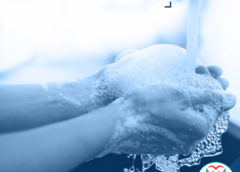The Global Handwashing Day is celebrated annually on October 15. Here we are discussing the importance of hand wash in corona-virus crisis and when to wash hand.
Worldwide, diarrhoea and pneumonia are leading causes of death for children under the age of five, according to the Global Handwashing Partnership. Among the most efficient and cheap ways to avoid these diseases is handwashing with soap.
Hands are a natural breeding ground for germs; in fact, they are one of the principal carriers of disease-causing germs. Almost 80% of diseases are transmitted by palms, so cultivating proper hand hygiene practices is an efficient way to avoid the spread of germs.
Handwashing saves lives. It is a lesson we have learnt from multiple pandemics. But that is also the message we easily overlook. This is why we are committed to permanently transforming the handwashing behaviour of the planet this Global Handwashing Day. By making significant changes in the way alphabet letters are learned.
How to Celebrate Global Handwashing Day
After you eat or leave the bathroom, maintaining a routine of washing your hands can reduce the risk of diseases more so that vaccines and medications are used. During this day, washing your hands can also nurture others to maintain their hygiene. On social media, you can also hashtag # global handwashing day and look up statistics on how handwashing can prevent infectious diseases easily and share that data with your friends.
Why We Love Global Handwashing Day
1. Getting clean hands to save lives
By modelling ideal handwashing behaviour and reminding others to always wash their hands, particularly during critical times, such as the COVID-19 pandemic, we make a difference.
2. It creates awareness.
It really saves lives, but not everyone knows that, and to make people more aware of the difference that washing your hands can make, Global Handwashing Day is here.
3. it’s very easy.
One of the most simple, healthiest practices we can pick up is handwashing with soap
Handwashing to avoid Coronavirus (COVID-19)
Handwashing requires five simple steps:
- Wet: Put both your hands under clean, running water.
- Lather: Apply a generous amount of soap to the inside and back of your hands as well as your fingertips. Wash your hands for at least 20 seconds (sing happy birthday) and don’t forget to wash under jewelry and fingernails. Your fingertips are especially important as people often put their fingers on their face, nose, and eyes. This is how the virus spreads.
- Scrub: Rub both hands together and move your fingertips around both hands. You don’t need a scrub brush. You don’t need to make harsh, scrubbing movements.
- Rinse: Return both hands to the running water and gently wash away the soap.
- Dry: Completely dry the water from your hands. Using a disposable towel (paper towel) is best to avoid leaving germs on towels. Air dryers, commonly found in public bathrooms, are also effective.
When to wash your hands?
- Hands ought to be cleaned with antiseptic soap:
- After returning from a public outing (grocery store, work, school, concert, sporting activity, hospital, nursing home, etc.).
- After shaking hands during flu season and virus outbreaks.
- After changing diapers or cleaning up a child who has used the toilet.
- After blowing your nose, coughing, or sneezing.
- After touching garbage.
- After putting on your shoes.
- After handling animals.
- Before and after caring for sick kids or adults.
- To make sure you don’t ingest any harmful bacteria before eating.
- Between handling items of raw or ready-to-eat food.
- After visiting the bathroom or changing the nappies of a child.
- After using public computers, touching public tables and countertops, cash and coins, other people’s phones, etc.
- After working in the garden or any location where there are dirt and dust.
- Before and after meal preparation.
What to do to keep yourself and others safe from COVID-19
Maintain at least a 1-metre distance between yourself and others to reduce your risk of infection when they cough, sneeze or speak. Maintain an even greater distance between yourself and others when indoors. The further away, the better.
Make wearing a mask a normal part of being around other people.
How to wear a mask:
- Clean your hands before you put your mask on, as well as before and after you take it off.
- Make sure it covers both your nose, mouth and chin.
Here are some specifics on what type of mask to wear and when, depending on how much virus is circulating where you live, where you go and who you are.
Wear a fabric mask unless you’re in a particular risk group. This is especially important when you can’t stay physically distanced, particularly in crowded and poorly ventilated indoor settings.
- Wear a medical/surgical mask if you:
- Are over 60,
- Have underlying medical conditions,
- Are feeling unwell, and/or
- Are looking after an ill family member.
How Can I get Involved?
That is easy! Enter the handwashing campaign to aid mark the Global Day of Handwashing to 365 days a year making handwashing a habit.
You can do a lot and here are a couple of ideas and tools to help you get started:
Download and share our Global Handwashing Day Activity Sheet
Follow ACI on Facebook, Twitter and Instagram and share our handwashing messages, using #GlobalHandwashingDay, with your school community, friends and family or post your own
Download and display a Global Handwashing Day Poster in your neighbourhood
Share handwashing tools from ACI with your contacts.
Download and post our Global Handwashing Day Activity Sheet
Make handwashing a priority in your school and at work with our resources for healthy returns.
Generate a Global Handwashing Day project, activity or campaign

Leave a Reply
You must be logged in to post a comment.